Rhododendron in Siberia: description, planting and care
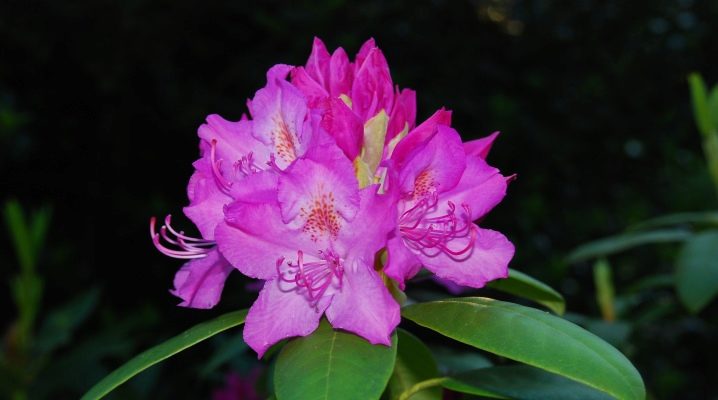
In areas with favorable climatic conditions, gardeners have the opportunity to grow a huge number of trees, shrubs and flowers that delight their owners with bright and fragrant inflorescences from early spring to late autumn.
Owners of household plots in Siberia and the Urals before planting a plant they like it is imperative to pay attention to its resistance to low temperatures and unfavorable climatic conditions. This recommendation should also be used when choosing a variety of rhododendron, which can surprise with abundant flowering even in the northern regions.
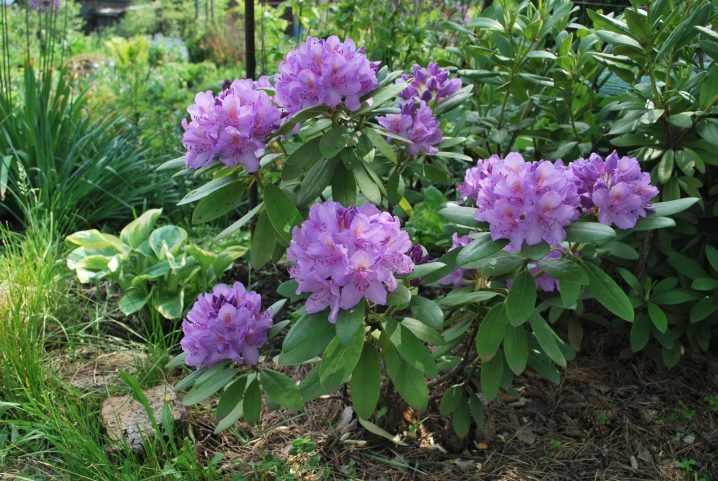
Description
Rhododendron is an ornamental plant that belongs to the Heather family and grows naturally in Indochina, in the Malay Archipelago, in Japan and the USA near water bodies and on the foothills of terraced slopes. Azaleas popular in floriculture are distinguished as a section of this genus or subgenus. Biologists in nature have more than 18 species of rhododendrons.
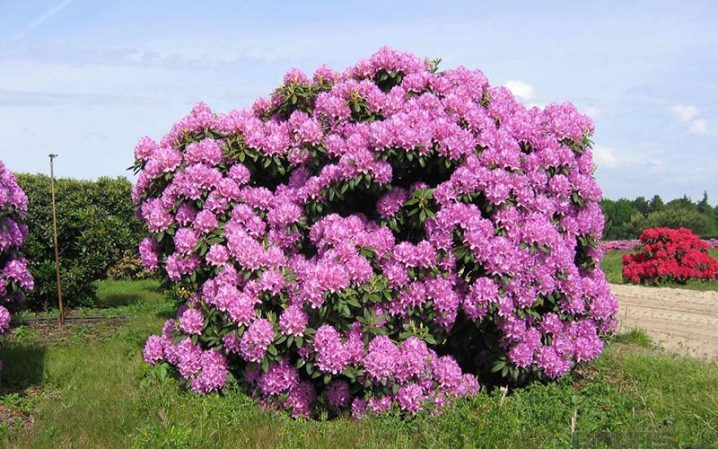
Representatives of this plant can be both deciduous and evergreen trees and shrubs. Some species are close to the ground, while others can be more than 30 meters high.
The shape of the dark green leaves can be oval or elongated. The color gamut of colors ranges from pink to maroon. Depending on the variety, the inflorescences can be in the form of bells, funnels, tubes. The maximum flower size can be 20 cm. The second name of the plant is a rose tree.
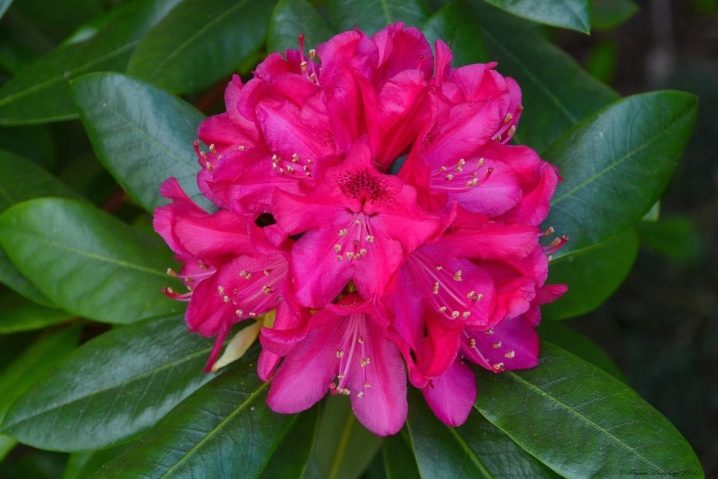
After flowering, a five-winged seed container is formed, which contains a large number of seeds. The size of one seed does not exceed 2 mm. The root system consists of adventitious roots and is located in the upper layers of the soil.
Types and varieties
For planting in unfavorable conditions of Siberia and the Urals biologists recommend paying attention to the following types of rhododendrons.
- Daursky - an evergreen bush that grows in Korea, Mongolia, China, Siberia, as well as in the Primorsky Territory. The maximum height of the shrub can reach 3.5 m. Characteristic features are gray bark and a large number of branches. Thin and brown shoots are directed upwards, and the branches are inclined towards the ground. Small leaves have a glossy surface on top and a scaly structure at the bottom, the color depends on the age of the shrub. The flowering period lasts about 20 days, and under favorable climatic conditions at the beginning of autumn, the plant can please the owners for the second time with delicate purple flowers.
This species has a high level of resistance to low temperatures.

- Ledebura (Maralnik) - a semi-evergreen shrub that can be found in deciduous and spruce thickets, on mountain terraces near reservoirs in the Siberian taiga, central Asia. The maximum height of a branchy plant can reach 2 m. This species has thin and brown shoots, on which branches downward grow. The size of the leaf plate does not exceed 3 cm and the leaf has a smooth top and a darker bottom with scales.
Flowering of the Ledebour rhododendron begins in April and ends in June. The shrub often re-forms buds in early fall.
Distinctive features of this species are the bright color of the inflorescences and the preservation of a large amount of green mass until spring.
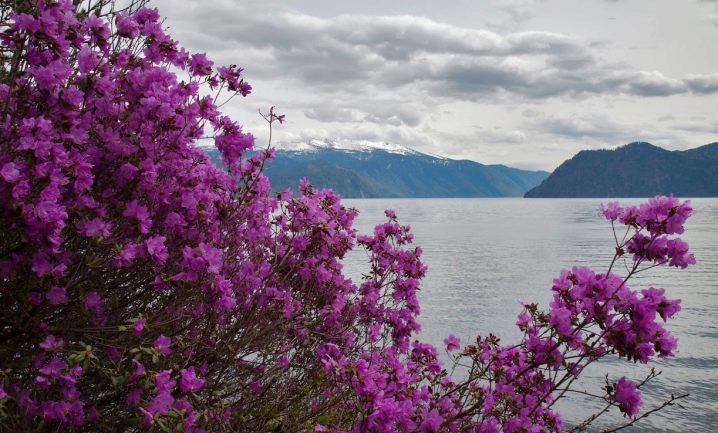
- Schlippenbach - a winter-hardy deciduous shrub that can be found in the PRC, the Republic of Korea and in Primorye. The height of an adult shrub can reach 5 m. The color of the bark is light gray, and the shade of the shoots is brown. Large wedge-shaped leaves can be about 10 cm long. The main feature of this species is resistance to frost down to -20 ° C. But in case of frostbite of the buds during spring frosts, the plant will be able to form only a small number of inflorescences.
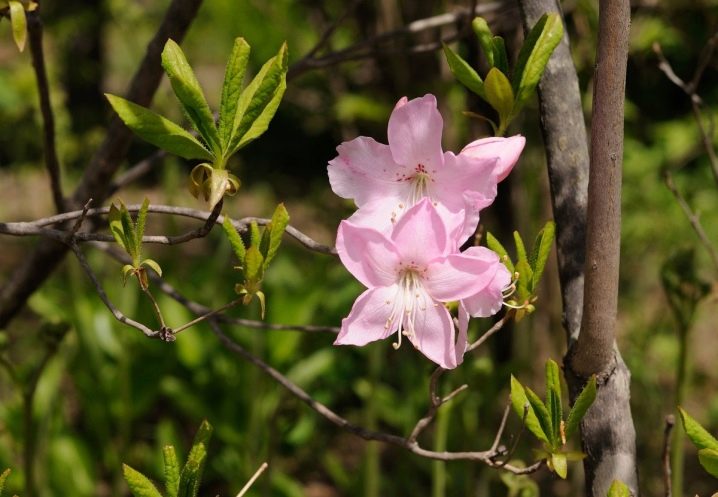
The long and painstaking work of breeders has made it possible to breed a large number of varieties that differ in appearance, properties and growing environment. For household plots located in Siberia, experienced gardeners are advised to purchase the following varieties of rhododendron.
- "Granny" - a short shrub that resembles Japanese azalea. The maximum height of the bush is 50 cm, and the crown diameter does not exceed 40 cm.
- Golden Lights Is a deciduous shrub that has orange, cone-shaped flowers. More than 10 flowers are formed in one inflorescence. This variety can withstand frost of -40 ° C.
- "Karens" - a spectacular shrub that has bright purple inflorescences. The maximum height is 1.5 m. The flowers are distinguished by a strong aroma.
- "White Lights" - a winter-hardy variety that can withstand -40 ° C without shelter. The color of the flowers is pink with gold spots. At the end of autumn, the leaves take on a bronze tint.
- Roseum Elegance Is an elegant variety that has delicate lilac flowers with wavy petals. The maximum height is 2.5 m.
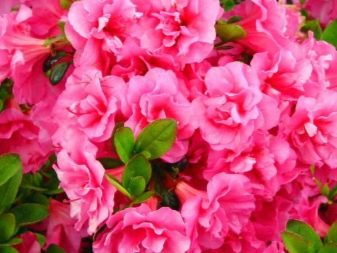
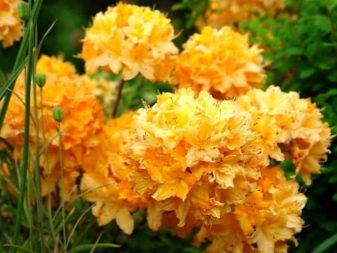
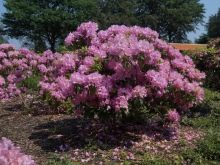
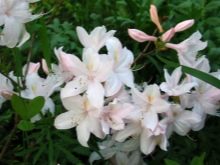
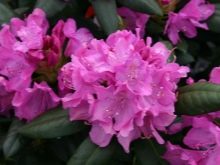
Landing
Rhododendron is a spectacular plant that can be both a tapeworm and part of a green composition. Bushes can be planted near paths and in recreation areas. For planting, it is necessary to choose shaded areas near the water under the wide crowns of pines and spruces, which will protect from cold and strong wind currents. The heat-loving bush has a negative attitude towards excessive illumination and direct sunlight.
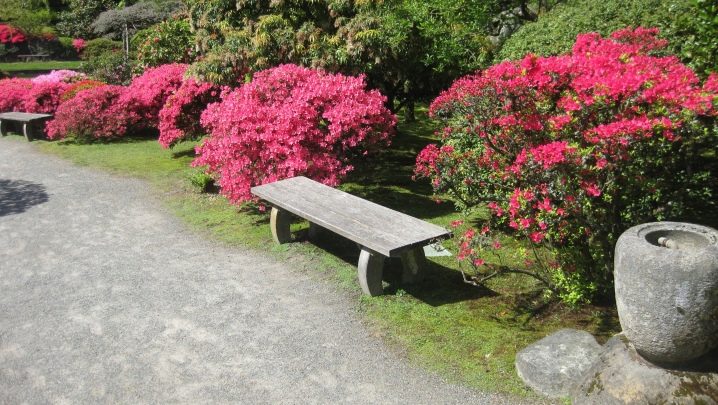
Rhododendron will not grow in wetlands with high moisture levels. If the groundwater is located in the upper layers of the soil, then drainage must be placed at the bottom of the planting pit, which will become an obstacle to root decay. The soil at the planting site should have a high level of acidity and a loose structure.
Experienced gardeners recommend additionally adding peat, sand and chopped tree bark.
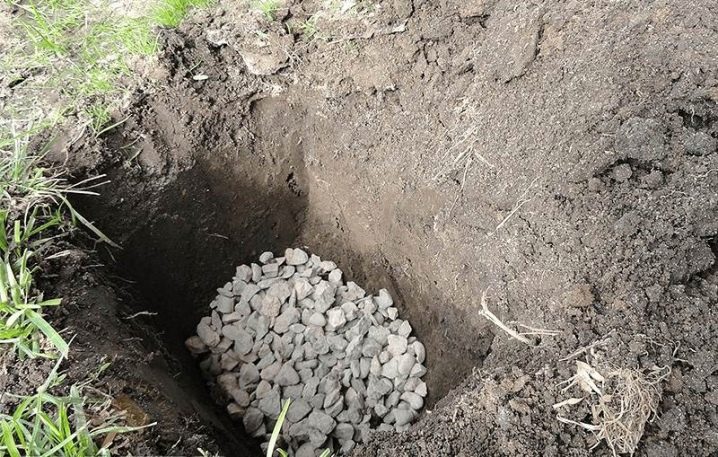
It is strictly forbidden to use ash and lime, which significantly reduce the acidity of the soil.
Experts advise to purchase planting material in specialized nurseries. In this case, the purchased plants will fully comply with all the declared varietal characteristics. A seedling with a closed root system has a higher chance of taking root and growing quickly. The bush should be of medium size, strong and developed stems, as well as a large amount of green mass without spots and signs of disease.
The beginning of spring is a good time for planting in open ground. The depth of the planting hole should be 55 cm high and 75 cm wide, and the minimum height of the layer with coarse drainage should be 15 cm.When planting, it is strictly forbidden to deepen the root collar, and after watering, the root zone must be covered with tree bark or other mulch.

Care
The shrub prefers moderate watering. In the summer, experts recommend spraying the green crown. For irrigation, use only settled tap water or rainwater, which contains a minimum amount of potassium and magnesium.
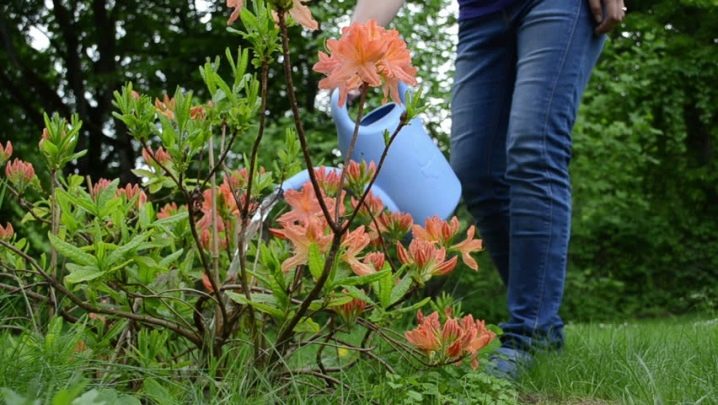
For the first few years, rhododendron does not need additional application of mineral and organic fertilizers. For the full growth of a young plant, it is enough to acidify the soil with citric acid in early spring. Adult shrubs need spring and summer fertilization with superphosphate, urea and potassium sulfate.
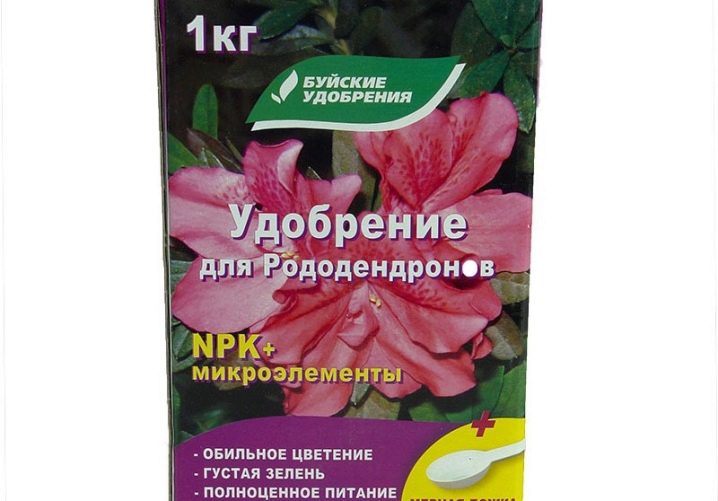
The main signs of a nutrient deficiency are:
- discoloration, fading of sheet plates;
- wilting and drying of leaves;
- a small number of new shoots;
- weak flowering.
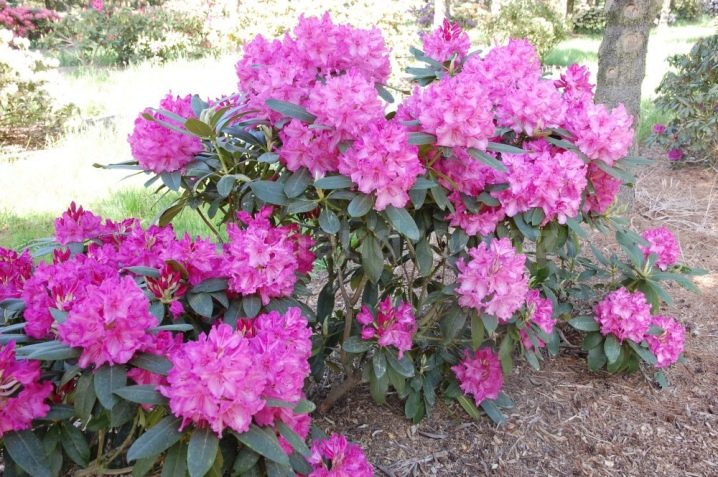
Botanists do not recommend formative pruning of the bushes. The plant needs only the spring sanitary removal of dry shoots and stems, as well as pruning of dried inflorescences.
Before the onset of cold weather, especially in the regions of Siberia, where the temperature can drop below -15 ° C, it is necessary to build a protective structure near the plant, and the root collar must be insulated at the end of November. You can simply wrap the crown with covering material and gently press it to the ground. This manipulation will be enough for the plant to overwinter safely.
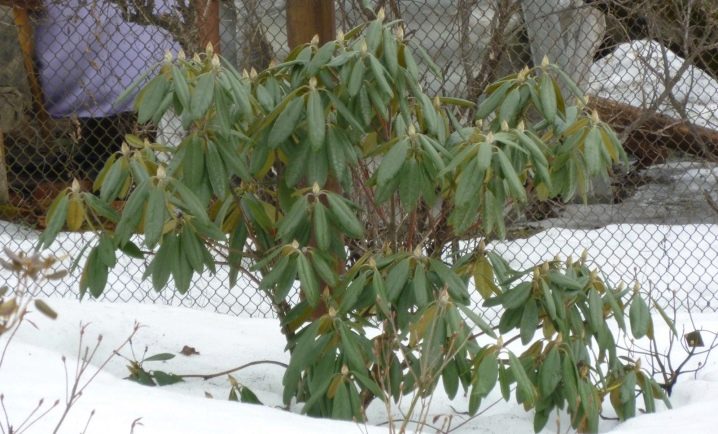
Reproduction
To get a new shrub, you can use several breeding methods:
- cuttings;
- rooting of branches;
- dividing the bush;
- seeds.
For propagation of the plant by cuttings, it is necessary to cut off the upper part of healthy and strong shoots, remove the lower leaves and clean the stem. The processed stalk must be omitted in a solution of a growth stimulator of the root system for at least 15 hours and only then plant in small containers with nutrient soil. To create a greenhouse effect, it is imperative to build a small greenhouse around the planting tank and place it in a room with a temperature of + 20 ° C. After 3 months, a pick is carried out with simultaneous pinching of the top.
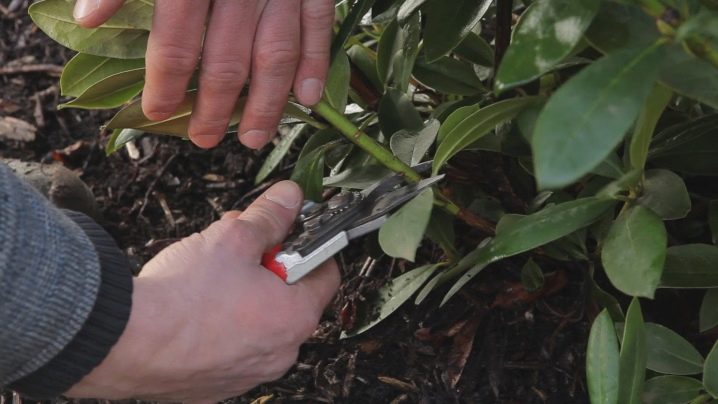
Young plants can be planted in open ground only next year.
Rooting branches is an easy breeding method. To implement it, it is necessary in the summer to press the healthy lower shoot to the soil and sprinkle a small part of it with earth. Until next fall, it is necessary to take care of the branches and water them regularly. A year later, the rooted seedlings are separated from the main bush and transplanted to a shaded place. And only after 3 years, the matured shrub can be planted on the planned site.

Dividing the bush involves dividing the mother plant into separate parts, which must have a strong and developed root system.
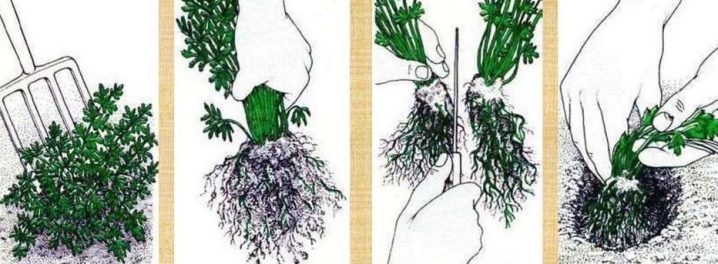
Gardeners rarely use the seed breeding method.... This method is of interest only to breeders who work in specialized nurseries.
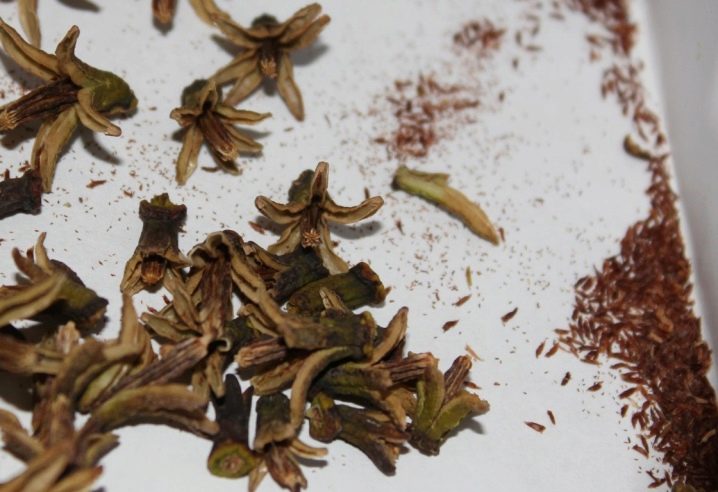
Diseases and pests
Like any plant, rhododendron can become sick or parasitized. Among the most dangerous, experts identify the following pests:
- Hemiptera bugs;
- scabbards;
- arthropod ticks;
- rhododendron midges;
- slugs.
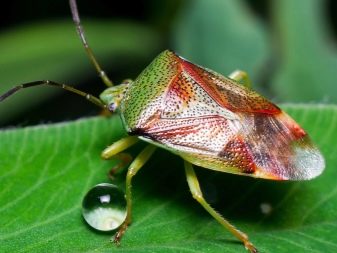

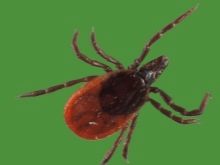
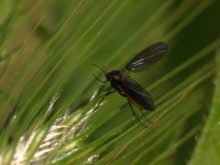
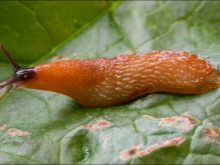
To destroy them, it is necessary to treat the plant with special chemicals.
Flowering shrubs can develop iron chlorosis, rust fungus, rot, and leaf blight. It should be noted that with careful observance of agricultural technology in the process of growing rhododendron, the plant rarely gets sick. In many cases, treatment with foundation or Bordeaux liquid helps.
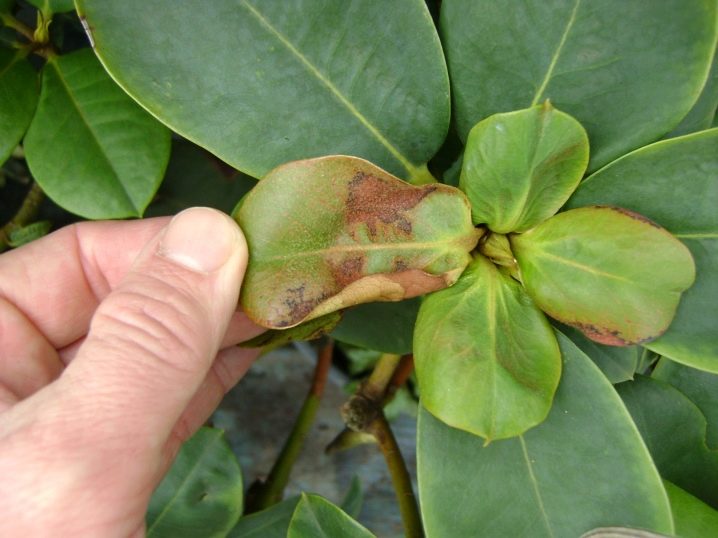
Reviews
Florists note that a common reason for poor rooting of young seedlings is a low level of soil acidity. When planting new plants, it is imperative to add a peat substrate to the soil.
Frost-resistant species and varieties of rhododendron are popular not only in Siberia, but also in other climatic zones. Experienced gardeners note the high level of resistance of these plants to low temperatures and the presence of abundant flowering during the short Siberian summer. The main condition for preserving rhododendron is compliance with all the rules of care and timely shelter of the plant before frost.

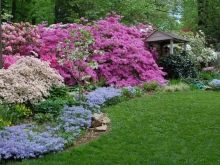
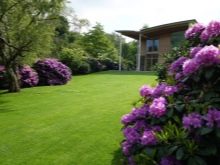
For information on how to choose a place, plant and care for rhododedron, see the video below.



































































































The article turned out to be very helpful.
The comment was sent successfully.